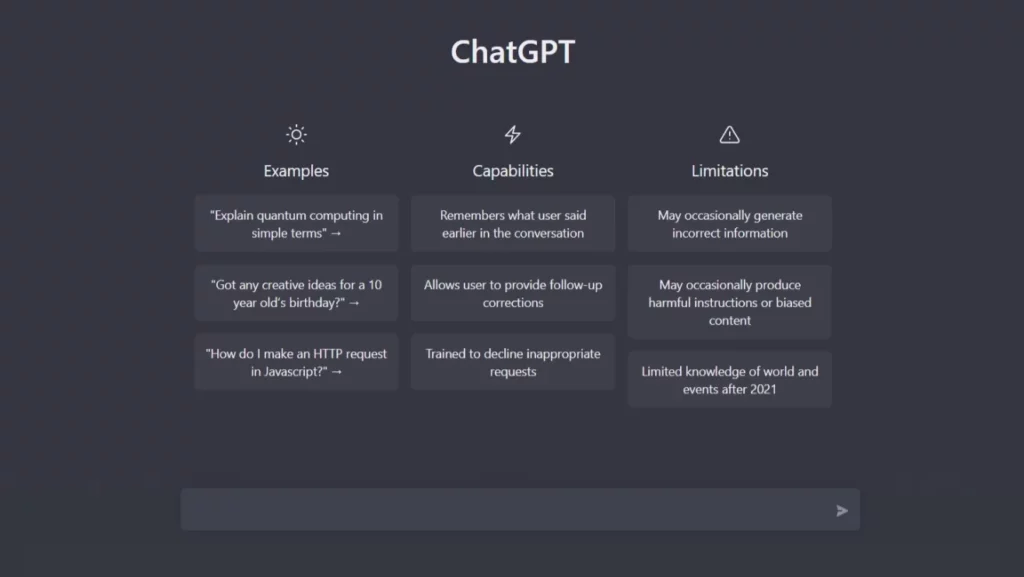In an age defined by constant digital chatter, it’s easy to overlook the silent ally that works tirelessly behind the scenes, streamlining my life and enhancing my productivity. As a busy woman, I likely have a lot on my plate. Between work, family, and other obligations, it can be tough to stay organized and productive. That’s where ChatGPT – my silent helper – comes in. ChatGPT is a language model developed by OpenAI, designed to assist me with a wide range of tasks and functions, making my life easier and more efficient. This tool is more than just a technological marvel—it’s a quiet companion, an attentive listener, and a resourceful assistant all rolled into one.

Whether I’m juggling an avalanche of work emails, burning the midnight oil for an upcoming exam, or venturing into a newfound hobby, I find an unwavering ally in ChatGPT. This intelligent assistant is always on standby, ready to lend a helping hand or share insights, regardless of the topic or task at hand. That leaves me truly amazed is its extraordinary ability to understand, learn from, and respond to a wide array of queries. It operates in silence, yet its influence over my day-to-day activities is profoundly evident.
In this personal exploration, I invite you on a journey to understand how this silent accomplice, ChatGPT, seamlessly integrates into my life. subtly but significantly revolutionizing my interactions with the digital world. From the genesis of its existence to the capabilities it presents today and its promising future potential, I will share my experiences and insights into the captivating evolution of ChatGPT and how it continues to redefine my digital life.
Unraveling the Magic: How ChatGPT Works?
I’m not a tech whiz, but the way ChatGPT works amazes me. It’s like having a conversation with a friend who seems to know a little bit about everything. The first time I asked it to help me draft an email, I was astonished. It was as if it read my mind!

Let’s take a closer look.
The Building Blocks: Transformers and Machine Learning
ChatGPT is built on a type of machine-learning model called a Transformer. Transformers are designed to handle sequential data, such as language, for tasks that require an understanding of context. They use an attention mechanism to weigh the relevance of words in an input sequence when generating an output sequence.
For example, consider the sentence “The cat, which is black, sat on the ____.” The word to fill in the blank is probably “mat.” But how do we know this? It’s because we understand the context. A Transformer model does the same. It learns the context and uses it to predict what should come next.
The learning process: Pre-training and fine-tuning
ChatGPT’s learning process is divided into two phases: pre-training and fine-tuning.
Pre-training
During this phase, ChatGPT learns to predict the next word in a sentence. It’s trained on a vast amount of text data from the internet. However, it’s important to note that it doesn’t know specifics about which documents were in its training set. This protects user privacy and ensures the model doesn’t unintentionally reveal sensitive information.
Let’s take an example. If the model sees the sentence “Paris is the capital of ____,” it will predict “France” as the next word because it has seen similar sentence structures during its pre-training.
if during pre-training, the model has seen many sentences like “The sky is blue,” it will likely fill in “blue” if presented with the sentence “The sky is ____.”
Fine-tuning
After pre-training, ChatGPT is further refined on a narrower dataset, generated with the assistance of human reviewers who follow guidelines provided by OpenAI. These guidelines help the model respond to a wide array of specific prompts.
Suppose you ask ChatGPT, “What’s the weather like in Paris?” It doesn’t know the real-time weather, but based on its fine-tuning, it will inform you that it doesn’t have access to real-time information.
For example, if you ask ChatGPT, “What’s the stock price of Apple today?” it has been fine-tuned to respond that it can’t provide real-time information.
The secret sauce: It’s all about probability
When you input a prompt to ChatGPT, it uses what it learned in its training to generate a response. It calculates the probability of each possible next word and chooses the one with the highest probability.
Imagine you ask ChatGPT, “Who was the first person to step on the moon?” The model will calculate scores for all possible next words after “moon.” Words like “Neil,” “Armstrong,” and “astronaut” will likely get high scores because of their frequent association with the moon landing in the training data.
Suppose you ask “Who won the World Cup in”, it will look at the most probable year and team names to complete the sentence based on its training data up until September 2021.
Continual learning: Feedback loops
OpenAI has implemented a feedback loop with the human reviewers during the fine-tuning process. This iterative feedback helps train the model to improve over time, enhancing its accuracy and reliability.
The magic of ChatGPT lies in its ability to understand the context and predict text based on probabilities. It’s like a well-read friend who has memorized lots of text and can intelligently guess what comes next. The result? A powerful tool that can generate human-like text, making it an invaluable asset in many personal and professional scenarios.
ChatGPT, my lifesaver: Anecdotes from my personal life
Once, I found myself in the kitchen, hands covered in flour, when I realized I’d forgotten the next step in the recipe. My laptop was in the other room, and I asked ChatGPT for help. Voila! It provided the recipe, and my strawberry cake was saved! It’s become my invisible kitchen assistant since then.
Battling deadlines: ChatGPT in my professional pife
Being a content writer, I often find myself chasing deadlines. One late Wednesday night, with a deadline looming, I found myself stuck. I turned to ChatGPT for help. Together, we brainstormed, and it provided an outline that sparked my creativity. That night, ChatGPT was my co-writer, my silent savior.
Beyond books: ChatGPT as my learning companion
My curiosity often leads me down the rabbit hole of new subjects. Recently, I decided to learn Spanish. With ChatGPT, my learning became interactive and fun. It corrected my mistakes, helped me with pronunciation, and even shared interesting Spanish idioms. It’s like having a personal language tutor, available 24/7!
It is incredibly helpful in simplifying my daily routines, improving productivity, and enhancing my overall customer service experience. It offers a wide range of services including answering questions, providing recommendations, generating text, automating tasks, personalizing user experiences, offering language translation services, providing educational resources, and much more. ChatGPT has become a valuable tool in my life, making tasks easier and more efficient, ultimately allowing me to focus on the things that matter most.
Ethics and AI: My Commitment to responsible use
Navigating the world of AI is fascinating, but it also comes with responsibility. I ensure that I’m using ChatGPT ethically, respecting privacy, and avoiding any misuse. It’s a tool, and like any tool, its use should be guided by responsibility.
Looking ahead: My hopes for ChatGPT
The future excites me. I imagine a day when ChatGPT will be even more intuitive, understanding my needs before I express them. Perhaps it could help me write a novel, or plan a perfect vacation itinerary. The possibilities seem endless!
ChatGPT has woven itself into the fabric of my life. From my kitchen escapades to late-night writing, it’s been there, an invisible ally. If you’re looking for a silent helper, I’d recommend inviting ChatGPT into your life. Trust me; you’ll wonder how you ever managed without it!
